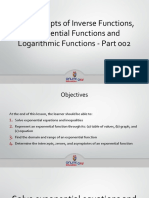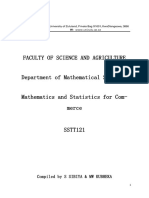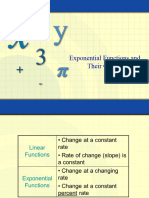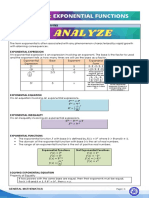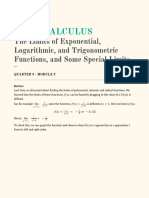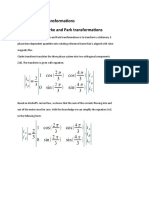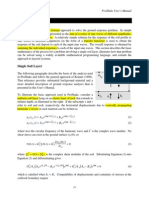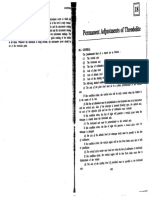0% found this document useful (0 votes)
26 views32 pagesCollegeAlgebra 11 ExponentialandLogarithmicFunctions
The document discusses exponential and logarithmic functions, including their definitions, characteristics, and applications in real-world scenarios such as compound interest and continuous growth/decay. It provides formulas for calculating exponential growth, writing exponential models, and graphing these functions, along with examples and explanations of transformations like shifts, stretches, and reflections. Additionally, it covers logarithmic functions, particularly natural logarithms, and their properties as inverse functions of exponential functions.
Uploaded by
aladar1900bpCopyright
© © All Rights Reserved
We take content rights seriously. If you suspect this is your content, claim it here.
Available Formats
Download as PDF, TXT or read online on Scribd
0% found this document useful (0 votes)
26 views32 pagesCollegeAlgebra 11 ExponentialandLogarithmicFunctions
The document discusses exponential and logarithmic functions, including their definitions, characteristics, and applications in real-world scenarios such as compound interest and continuous growth/decay. It provides formulas for calculating exponential growth, writing exponential models, and graphing these functions, along with examples and explanations of transformations like shifts, stretches, and reflections. Additionally, it covers logarithmic functions, particularly natural logarithms, and their properties as inverse functions of exponential functions.
Uploaded by
aladar1900bpCopyright
© © All Rights Reserved
We take content rights seriously. If you suspect this is your content, claim it here.
Available Formats
Download as PDF, TXT or read online on Scribd
/ 32

























